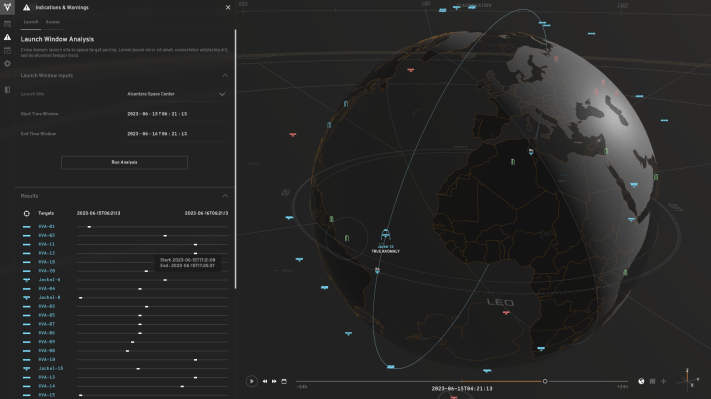True Anomaly has landed a $17.4 million contract from the U.S. Space Force Space Systems Command to help the warfighter make critical decisions in the space domain.
The startup, which was founded less than two years ago, is tasked with developing a suite of space domain awareness (SDA) capabilities for the Space Force. The 48-month-long contract will be delivered via a Small Business Innovative Research (SBIR) Phase 3 contract.
While SDA technologies have traditionally focused on spacecraft traffic management and collision avoidance, there’s been a “mentality change” related to the establishment of Space Force itself, True Anomaly chief product officer Tom Nichols explained in a recent interview.
“The stand up of U.S. Space Command and the stand up of the U.S. Space Force are all in line with the same thinking: that it’s not just tracking objects to make sure they don’t hit [each other], it’s also ensuring that we understand what people are doing in the domain and using that information to make decisions,” he said.
Nichols should know: He joined the U.S. Air Force as a space operations officer in 2011, and eventually went on to work as an instructor at the Space Force’s weapons school, where he was tasked with building a curriculum on orbital warfare. As a spacecraft operator with the Force, he saw firsthand how desperately needed SDA capabilities were lacking.
“I was frustrated in the military,” Nichols explained. “Part of those frustrations were about the capabilities that we had to do our job. That’s when Even [Rogers, True Anomaly CEO] and I […] looked at each other and said, we could probably go and build these capabilities faster and cheaper or better than the other options out there right now.”
True Anomaly’s solution is referred to internally as “SDA Kit,” and it has four main functions. The first is called DTID (Detect, Track, ID), which will help the Space Force find and track an object in space. The second is Characterization, or taking the information that’s being collected about the spacecraft — the amount of light it’s emitting, for example — and using that to characterize what it does.
The third is called TW&A (Threat Warning and Assessment), which takes that characterized information, stores it and uses machine learning to predict changes to that object, such as to its orbital trajectory, or identify anomalous changes. The fourth function, Data Exploitation and Integration, funnels publicly available data, commercial data and classified data to perform event forecasting.
Some of the technology that True Anomaly is developing under the contract has existed in some form, but the “quality, access and user experience of that capability has been nascent for the Space Force,” Nichols explained.
“There’s tons of data available to space operators today,” Even Rogers said in the same interview. “The problem is it’s not being used in a way that’s productive, that creates insight to elevate the capacity for options for precision.”
The new contract for SDA capabilities ties in closely with True Anomaly’s ongoing work on Mosaic, an integrated software platform for space operations. The SDA capabilities will essentially be an application layer on top of this broader platform. Mosaic will also get additional data from True Anomaly hardware that is soon to be on orbit: Jackal, an autonomous spacecraft designed to rendezvous with other spacecraft and capture images up-close.
The first two Jackal spacecraft are scheduled to fly on SpaceX’s Transporter-10 rideshare mission next February. Nichols said that Jackal will help the Space Force make better decisions in the future by providing it with a fuller picture of what American adversaries are doing on orbit.
“It’s not just the value of the information in that moment for operations, but it’s the value of information over the long term so that you can develop tactics, techniques and procedures, so that you can make more precise investments in enabling technologies that can counter threats or mitigate those threats,” he said.
The story has been updated to include the correct timeline for the Transporter-10 mission.
